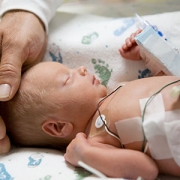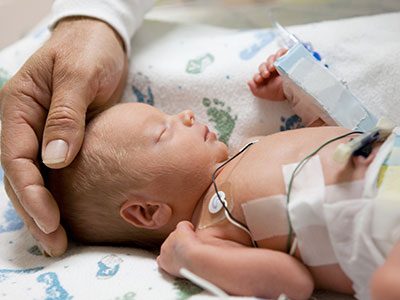Alternative synthetic compound might offer safer solution to children’s health

Not only is bisphenol A (BPA) added to medical equipment used to treat patients, it can also be found in 60% of neonatal intensive care unit (NICU) supplies, such as bandages and items for feeding, suggesting that occupational and clinical environments have a higher exposure to this synthetic compound.
Researchers at Children’s National Hospital found that a commonly used plastic, known as bisphenol S (BPS), was the least disruptive to cardiac electrophysiology and may serve as a safer chemical alternative for plastic medical devices used to treat vulnerable populations compared to other compounds, according to a new preclinical study published in Toxicological Sciences.
For decades, the medical device industry has used bisphenol chemicals known to antagonize ion channels, impair electrical conduction and trigger arrhythmias that affect the overall cardiovascular health in children. Not only is bisphenol A (BPA) added to medical equipment used to treat patients, it can also be found in 60% of neonatal intensive care unit (NICU) supplies, such as bandages and items for feeding, suggesting that occupational and clinical environments have a higher exposure to this synthetic compound.
Yet, very little is known about the downstream impact of BPA, BPS or bisphenol F (BPF) exposure on cardiac physiology.
To shed light on the safety profile of BPA and its alternatives BPS and BPF in plastic medical devices, Children’s National researchers present the first study that compares the acute effects of these three chemicals on cardiac electrophysiology in a preclinical model.
According to the researchers, children should continue receiving medical care to treat their condition.
“It is important to investigate iatrogenic plastic chemical exposures in young patients, as biomonitoring studies have reported elevated chemical exposures in NICU and pediatric intensive care unit patients,” said Devon Guerrelli, M.S., a Ph.D. candidate at Children’s National. “Our lab is actively working with cardiac surgeons to investigate patient exposure to both BPA and phthalate plasticizer chemicals. Patients and their parents can rest assured that our team’s priority is safety and advancement of the field.”
Future studies are needed to fully understand the chemicals’ safety on cardiac electrical and mechanical function due to notable biological differences between humans and preclinical models. The researchers call for the scientific community to explore the impact of these compounds on other organ systems by comprehensively assessing intracellular targets, genomic and proteomic expression profiles.
While health concerns remain, there is no consensus among the scientific community on the potential use of safer compound alternatives in pediatric plastic medical devices.
“First, a variety of preclinical models have been used by the scientific community to assess BPA toxicity. But, there is considerable variability between these different models, including differences in ion channel expression, which may produce conflicting results and limit extrapolation of the data to humans,” said Nikki Posnack, Ph.D., principal investigator at Children’s National Sheikh Zayed Institute for Pediatric Surgical Innovation and senior author. “Accordingly, in the presented study, we tested the effects of bisphenol chemicals using three different preclinical models. Second, studies assessing the safety profile of new structural analogs to BPA are limited.”
The researchers compared the cardiac safety profile of BPA, BPS and BPF by using a whole-cell voltage clamping recording on cell lines to study voltage-gated channels Nav1.5, Cav 1.2 and hERG, allowing the measurements of the cell’s electrical properties and total current through all the channels on a membrane in non-human subjects and cardiomyocytes human cell lines. Results of the study found that BPA was the most potent inhibitor of sodium, calcium and potassium channel currents compared to the alternatives BPS and BPF. BPA and BPF exposure also slowed atrioventricular conduction and increased atrioventricular nodal refractoriness.
“Based on our findings, acute exposure to high concentrations of BPA could lead to changes in cardiac electrophysiology,” said Tomas Prudencio, M.S., a research technician at Children’s National and lead author. “This includes slowing of electrical conduction from the atria to the ventricles, which would present as a prolongation of the PR interval in an electrocardiogram.”





